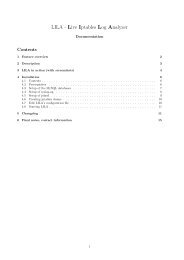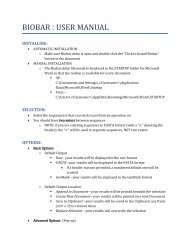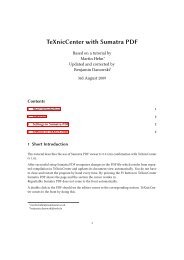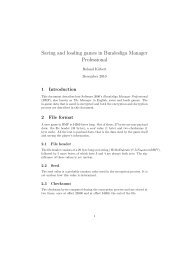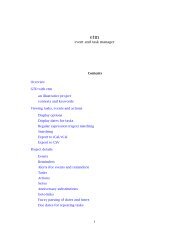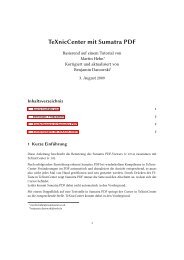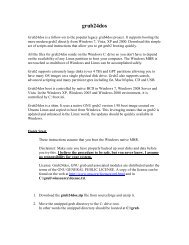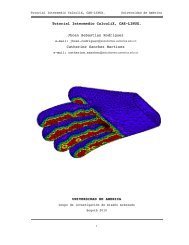Easy Java Websites (EJW)
Easy Java Websites (EJW)
Easy Java Websites (EJW)
You also want an ePaper? Increase the reach of your titles
YUMPU automatically turns print PDFs into web optimized ePapers that Google loves.
unique within the document. For example:<br />
/webapp/p1/customer<br />
/webapp/p1/customer/customer.ejw<br />
would produce the following request Ids:<br />
customer<br />
customer.ejw<br />
This value is your request Id.<br />
match The match attribute overrides matching the request Id<br />
to the URI and will instead match the request URI to<br />
the match string. Can use characters that can’t be<br />
used in an XML Id. This attribute is optional and<br />
overrides matching the request Id.<br />
matchRegExp The matchRegExp attribute overrides both matching<br />
the request Id and the match string and will instead<br />
match the request URI to the regular expression<br />
string. Great flexibility in matching URIs and you<br />
can use wildcards the regex way(.*). This attribute is<br />
optional and overrides matching both the request Id<br />
and match.<br />
secureConnection If true, the request will only be processed over a<br />
secure (https) connection. This attribute is optional<br />
and the default is false.<br />
handlerClass The <strong>Java</strong> class instance to associate with the request.<br />
This class must extend RequestHandler. If this<br />
attribute is not defined, then there must be a forward<br />
with ‘key=”success”’ defined or a “home” url must<br />
be defined.<br />
handlerMethod The method name in the class that is to be called.<br />
The method defined in the class should have<br />
“validate” prepended for a validation method. But,<br />
“validate” shouldn't be included in the<br />
“handlerMethod” definition. During a web request,<br />
<strong>EJW</strong> will check the class for a method matching the<br />
name “validate[Method]()”, if found it will be called.<br />
If handlerMethod is not defined, the default name<br />
“request” will be used and the same process above<br />
will be used with validateRequest() being called first<br />
(if it exists), followed by request().






